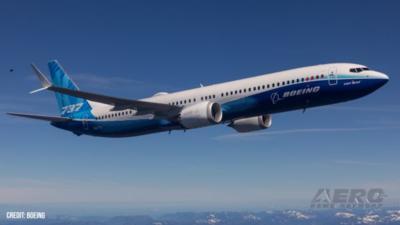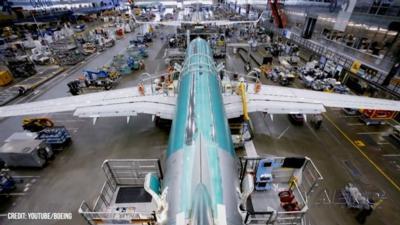Tue, Jan 28, 2025
Manufacturer’s Requests Delay for Stall Management Yaw Damper Fix
The FAA recently published Boeing’s exemption request involving the Stall Management Yaw Damper (SMYD) system on its uncertified 737 MAX 7 and MAX 10 airliners. If the appeal is somehow approved, Boeing will be able to deliver the jets as-is through October 2028.

“Boeing is requesting a time-limited exemption that allows for certification and delivery of SMYD [for the 737 MAX 7 and 737 MAX 10] through October 31, 2028,” it said. The additional time would allow it to jump through all the necessary hurdles to get the SMYD in compliance and then retrofit delivered jets with the updated system.
The SMYD system increases an aircraft’s stability when nearing stalls by providing warnings, identifying stall conditions, and actively controlling the aircraft's yaw. The version that Boeing used on the 737 MAX 9 was modified to fit the MAX 7 and then again for the MAX 10 to accommodate their different fuselage sizes.
The new software also implements enhanced angle of attack (EAOA) features to reduce pilot workload and improve system integrity, specifically during air data and AOA system failures. This change addresses two accidents in 2018 and 2019 that caused 346 fatalities and were partially attributed to said failures.

While the FAA likely appreciates the plane maker’s upgrades, it can’t ignore the fact that the new SMYD system is out of compliance with two CFR sections. The SMYD also does not qualify for Level A (DAL A) certification under the Radio Technical Commission for Aeronautics’s (RTCA) standards since it was previously only approved under Level B.
However, with Boeing already being behind schedule on getting the 737 MAX 7 and MAX 10 certified, it has requested that the FAA grant an exemption.
“Granting an exemption will enable earlier implementation of the EAOA capabilities to production airplanes and the 737 MAX fleet, providing industry-leading safety enhancements,” Boeing continued. “An exemption will deliver the 737-7 and 737- 10 airplanes to customers sooner with enhanced safety.”
More News
Get The Latest in Aviation News NOW on Instagram Are you on Instagram yet? It's been around for a few years, quietly picking up traction mostly thanks to everybody's new obsession >[...]
From 2019 (YouTube Edition): Panel Possibilities Range From LSA To eVTOL Aircraft For the most part, pilots care about the information being presented to them rather than how that >[...]
"Flight testing demonstrated significant performance improvements with the Pathfinder-equipped Husky. Compared to the baseline Type Certificated 2-blade Hartzell propeller, the 3-b>[...]
Estimated (EST) When used in NOTAMs “EST” is a contraction that is used by the issuing authority only when the condition is expected to return to service prior to the e>[...]
Aero Linx: Coalition of Airline Pilots Associations (CAPA) The Coalition of Airline Pilots Associations (CAPA) is the world’s largest pilot trade association representing ove>[...]
 ANN FAQ: Follow Us On Instagram!
ANN FAQ: Follow Us On Instagram! Classic Aero-TV: Innovation By Avilution Pilots Care About Results
Classic Aero-TV: Innovation By Avilution Pilots Care About Results Aero-News: Quote of the Day (05.09.25)
Aero-News: Quote of the Day (05.09.25) ANN's Daily Aero-Term (05.09.25): Estimated (EST)
ANN's Daily Aero-Term (05.09.25): Estimated (EST) ANN's Daily Aero-Linx (05.09.25)
ANN's Daily Aero-Linx (05.09.25)




